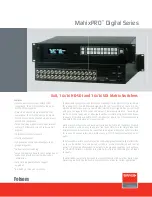
1-17
Figure 1-14
Basic architecture of HoVPN
MPLS network
PE
PE
SPE
UPE
UPE
CE
CE
CE
CE
VPN 1
VPN 1
VPN 2
VPN 2
Site 1
Site 2
As shown in
Figure 1-14
, devices directly connected to CEs are called underlayer PEs (UPEs) or
user-end PEs, whereas devices that are connected with UPEs and are in the internal network are called
superstratum PEs (SPE) or service provider-end PEs.
The hierarchical PE consists of multiple UPEs and SPEs, which function together as a traditional PE.
With the HoVPN solution, PE functions are implemented hierarchically. Hence, the solution is also
called hierarchy of PE (HoPE).
UPEs and SPEs play different roles:
z
A UPE allows user access. It maintains the routes of the VPN sites that are directly connected with
it, It does not maintain the routes of the remote sites in the VPN, or only maintains their summary
routes. A UPE assigns inner labels to the routes of its directly connected sites, and advertises the
labels to the SPE along with VPN routes through MP-BGP.
z
An SPE manages and advertises VPN routes. It maintains all the routes of the VPNs connected
through UPEs, including the routes of both the local and remote sites. An SPE advertises routes
along with labels to UPEs, including the default routes of VPN instances or summary routes and
the routes permitted by the routing policy. By using routing policies, you can control which nodes in
a VPN can communicate with each other.
Different roles mean different requirements:
z
SPE: An SPE is required to have large-capacity routing table, high forwarding performance, and
fewer interface resources.
z
UPE: A UPE is required to have small-capacity routing table, low forwarding performance, but
higher access capability.
HoVPN takes full use of both the high performance of SPEs and the high access capability of UPEs.
Note that the concepts of SPE and UPE are relative. In the hierarchical PE architecture, a PE may be
the SPE of its underlayer PEs and a UPE of its SPE at the same time.
Summary of Contents for S7906E - Switch
Page 82: ...1 4 DeviceA interface tunnel 1 DeviceA Tunnel1 service loopback group 1...
Page 200: ...1 11 DeviceB display vlan dynamic No dynamic vlans exist...
Page 598: ...ii...
Page 1757: ...4 9...
Page 1770: ...6 4...
Page 2017: ...2 11 Figure 2 3 SFTP client interface...
Page 2238: ...1 16 DeviceA cfd linktrace service instance 1 mep 1001 target mep 4002...
















































